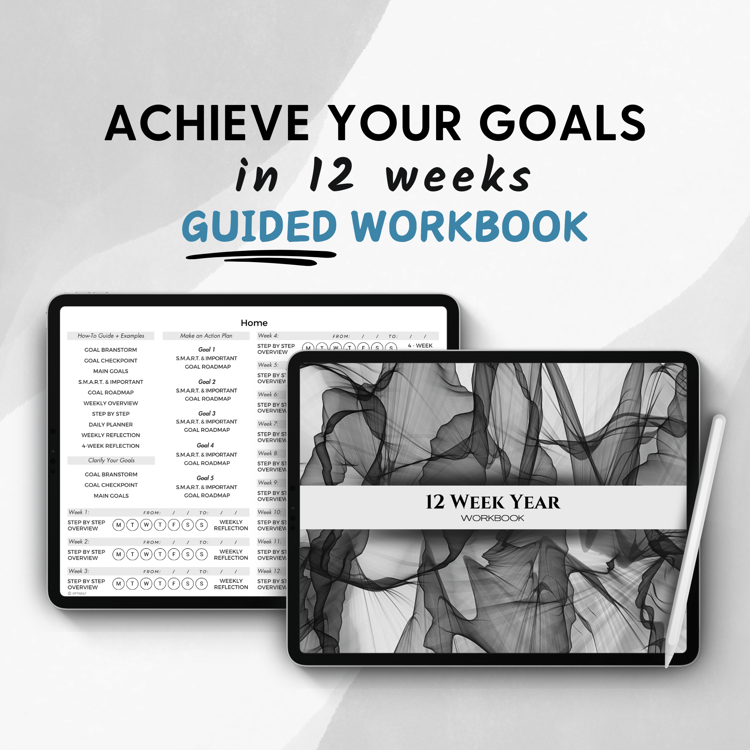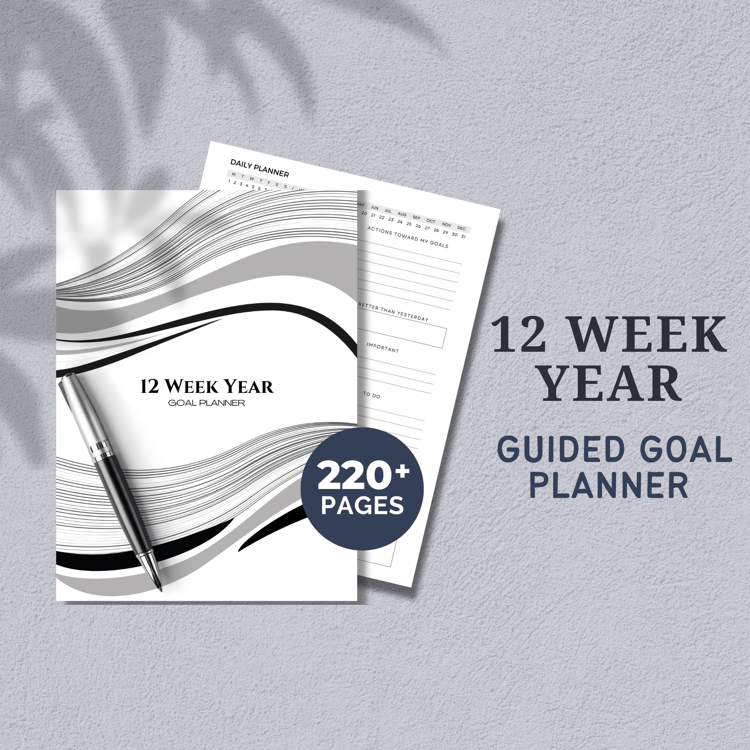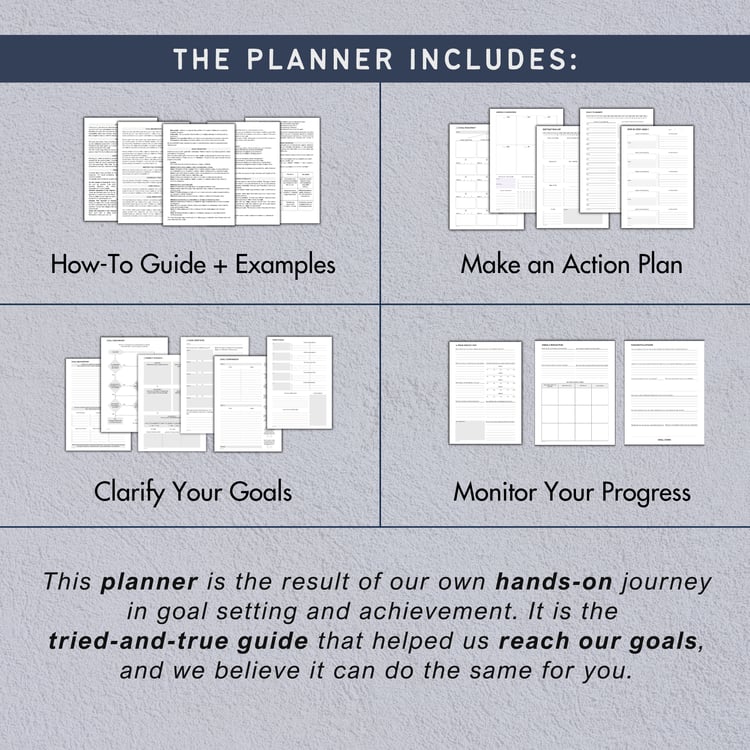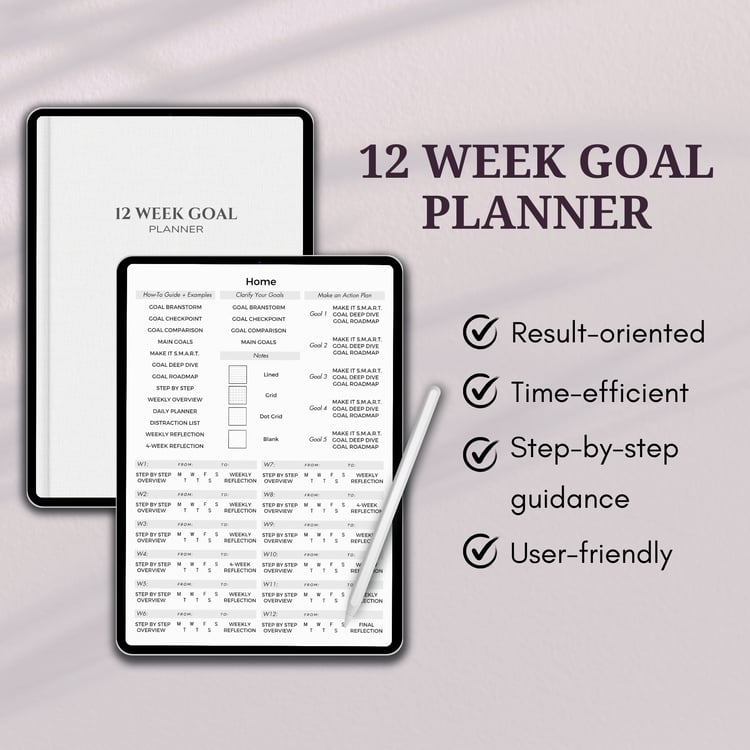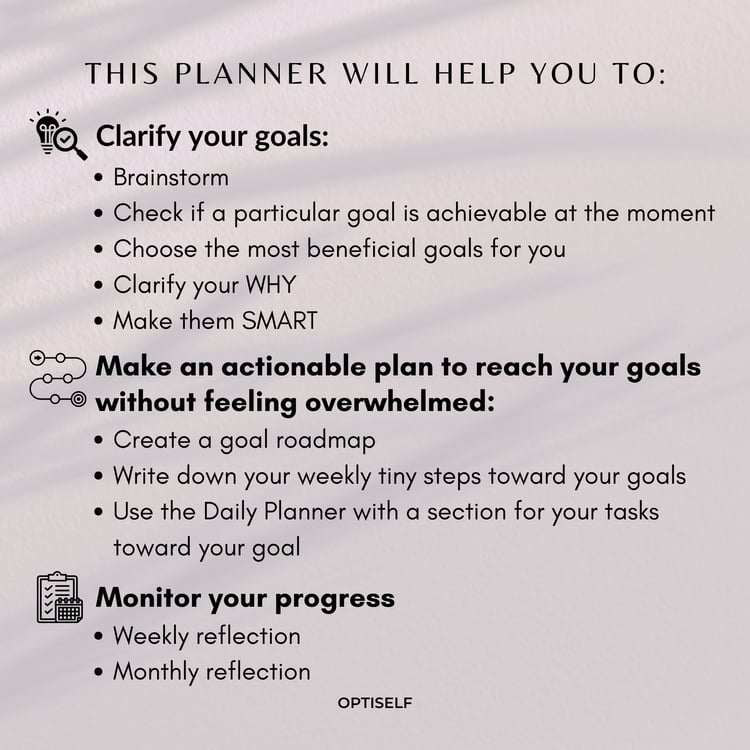New year, new goals—same old story. Every year, millions set resolutions—by February, most are already collecting dust. Why does this keep happening?
The problem lies in the outdated approach most goal-setting systems use: set big, lofty goals for the year, cross your fingers, and hope for the best. By the time the inevitable mid-year slump hits, motivation fizzles out, and those once-exciting ambitions are forgotten.
Here’s the truth: traditional yearly goals fail because they’re too distant, too vague, and too overwhelming. The 12-Week Year system turns this flawed approach on its head by condensing your plans into focused, actionable 12-week sprints. This simple yet powerful shift keeps you energized and on track—no room for procrastination, just progress.
If you’re tired of feeling stuck or falling short, this might just be your breakthrough. Let’s explore why the 12-Week Year system is so effective—and how it can help you crush your goals like never before.
What Makes the 12-Week Year System So Effective?
1. Focus and Urgency
Picture this: instead of having 12 months to complete your goals, you treat 12 weeks as an entire year. Sounds intense, right? That’s exactly the point! A shorter timeline creates an incredible sense of urgency. With no time to waste, procrastination takes a backseat, and you’re laser-focused on what really matters.
Think of it like a sprint rather than a marathon. You’re less likely to get distracted or bogged down by minor tasks because every day counts. This sharp focus pushes you to work smarter, not harder, and achieve results you didn’t think were possible.
2. Clarity and Direction
Traditional planning often fails because goals feel like distant dreams with no clear roadmap. The 12-Week Year system fixes this by breaking goals into clear, manageable weekly and daily actions. Each task serves a purpose, directly tying into the bigger picture.
With a structured system, tracking progress becomes a breeze. If something isn’t working, you can pivot quickly—no more wandering in the fog or second-guessing your next move.
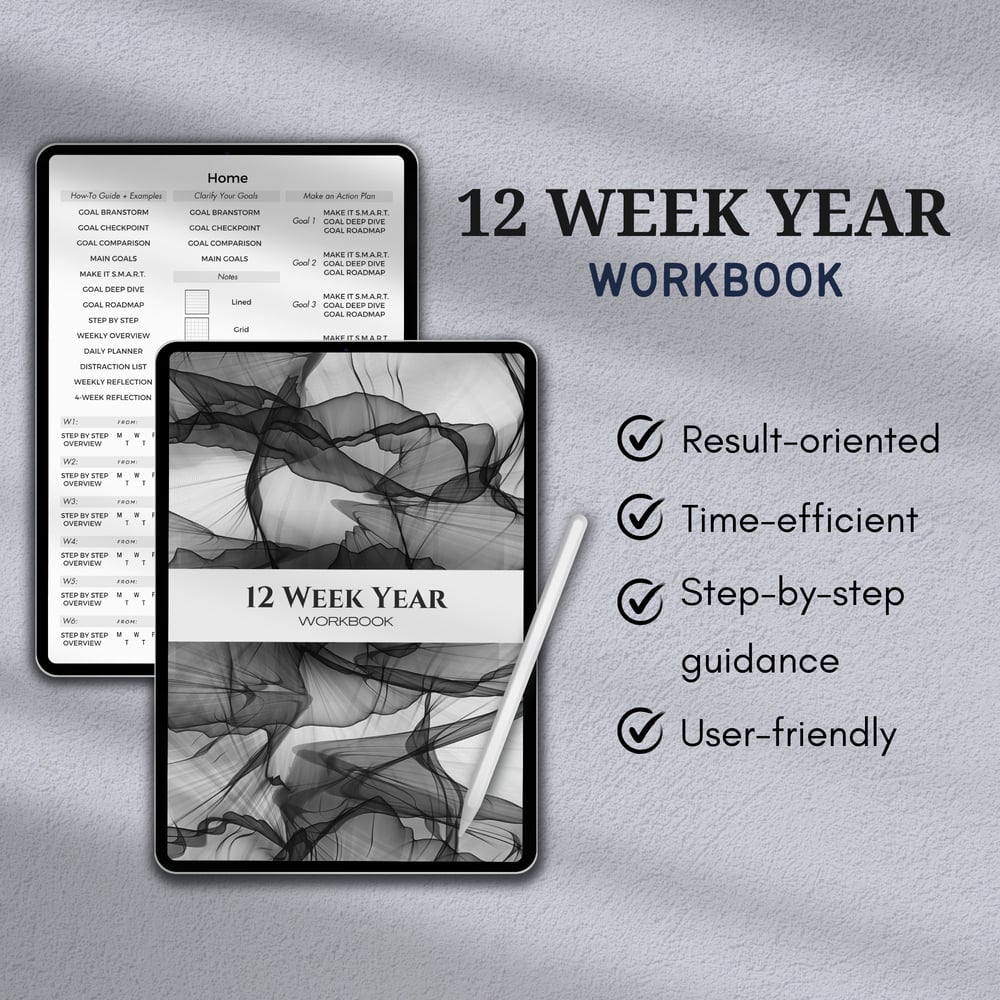
This workbook is based on our personal journey of setting and achieving goals, which is why we are confident in its effectiveness.
3. Real-Time Feedback
Most traditional plans fail because they aren’t reviewed until the end of the year—when it’s too late to adjust course. The 12-Week Year system solves this with weekly reflections to assess progress, identify challenges, and make real-time adjustments.
These check-ins help spot small issues before they become big problems. The system also includes monthly reviews for a broader perspective, allowing you to celebrate wins, identify trends, and continuously improve. Think of it as a GPS for your goals, constantly recalibrating to ensure you’re on track.
4. Smarter Time Management
Have you ever noticed that tasks expand to fill the time you give them? That’s called Parkinson’s Law, and it’s why projects often take way longer than they should. The 12-Week Year system works around this by shrinking your timeline. With less time available, you naturally work more efficiently.
You’ll learn to prioritize what’s truly important, ditch busy work, and focus on high-impact activities. The result? A productivity boost that will leave you wondering why you didn’t try this sooner!
5. Motivation That Lasts
One of the most satisfying parts of the 12-Week Year is how often you get to celebrate your wins. Instead of waiting an entire year to feel accomplished, you’re crossing a finish line every three months. These regular victories keep your motivation high and your momentum strong.
Even better, completing each 12-week cycle helps you build good habits and refine your approach. You’ll feel energized, inspired, and ready to tackle the next challenge.
Why the 12-Week Year System is Better than Traditional Planning
1. “Someday” Syndrome
Year-long goals feel so distant that it’s easy to procrastinate. There’s always tomorrow, next month, or “someday.” The 12-Week Year system eliminates that mindset. The compressed timeline creates a “do it now” mentality—every day and week is critical, leaving no room for delays.
2. Prevents Burnout
Let’s face it: big, long-term goals can feel overwhelming. Without clear checkpoints, it’s easy to lose steam or feel stuck. The 12-Week Year breaks the year into manageable chunks, so you can go all-in for 12 weeks, then pause to rest or recalibrate before starting the next cycle. It’s intense—but in a way that’s sustainable.
3. Adapts to Change
In today’s fast-paced world, yearly plans often become irrelevant by midyear. The 12-Week Year’s shorter cycles make it easy to adjust to changes. Whether life throws you a curveball or priorities shift, you can adapt without losing momentum. It’s flexible, practical, and perfectly suited for modern life.
4. Builds Discipline and Accountability
Consistency is key to success, and the 12-Week Year system helps you build it. With regular check-ins and a focus on execution, you’ll develop the discipline needed to follow through on your plans. Whether you’re working solo or as part of a team, the system’s built-in accountability keeps everyone on track and aligned.
5. Empowers Teams and Organizations
For businesses, the 12-Week Year system is a game-changer. Instead of spreading efforts thin across countless goals, teams focus on a few key priorities. This alignment boosts collaboration, keeps motivation high, and makes success feel both attainable and rewarding. By focusing on short-term wins, organizations can achieve long-term growth.
The 12-Week Year system isn’t just another productivity hack—it’s a powerful mindset shift. By treating 12 weeks as your year, you’ll work with sharper focus, greater urgency, and a stronger sense of purpose. Whether you’re striving for personal milestones or driving team success, this system provides a clear, actionable framework to reach your goals.
Unlike traditional annual planning, the 12-Week Year delivers a results-driven approach that keeps you motivated and on track. It’s all about creating structure, building momentum, and making every week count.
So, why wait? Take the first step now—map out your next 12 weeks, set clear goals, and take action. Your future self will thank you!




